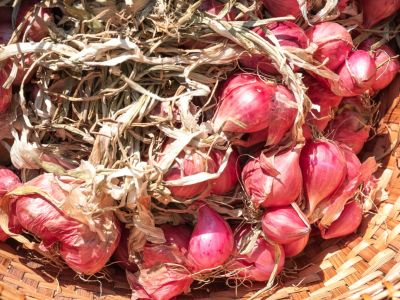Growing Shallots
Shallots prefer soil that drains well and has a high composition of organic matter. The best soil pH for shallots are 6.3 to 6.8. Keeping shallot beds free of weeds is essential to good development and helps with shallot picking once the time to harvest a shallot plant arrives. Shallots are grown from sets as well as transplants. Shallot plants benefit from a regular feeding of organic fertilizer. The root system of shallot plants is extremely shallow and the plants need consistent water in order to thrive.
When to Harvest Shallots
Some people have a difficult time knowing when to harvest shallots. Both the plant tops and the bulbs can be eaten, so the time to harvest a shallot plant depends on the part you will be using. The tops can be harvested within 30 days and are commonly used in soups, salads, and stews. The bulbs will take around 90 days to mature. Shallot bulb picking should begin when the greens of the plant start to wither, fall over, and die. They will turn brown and become droopy, while the bulbs will protrude from the soil and the outer skin becomes papery. This usually happens in mid to late summer.
How to Harvest Shallots
When it is time to harvest a shallot plant bulb, dig the bulbs, shake off the dirt, braid the tops, and let them dry. Use a digging fork to gently lift the entire clump out of the ground and gently shake off the soil. Allow the bulbs to dry out some in the garden for about a week or so, weather permitting. You can also store them in mesh bags in a cool and dry location.
